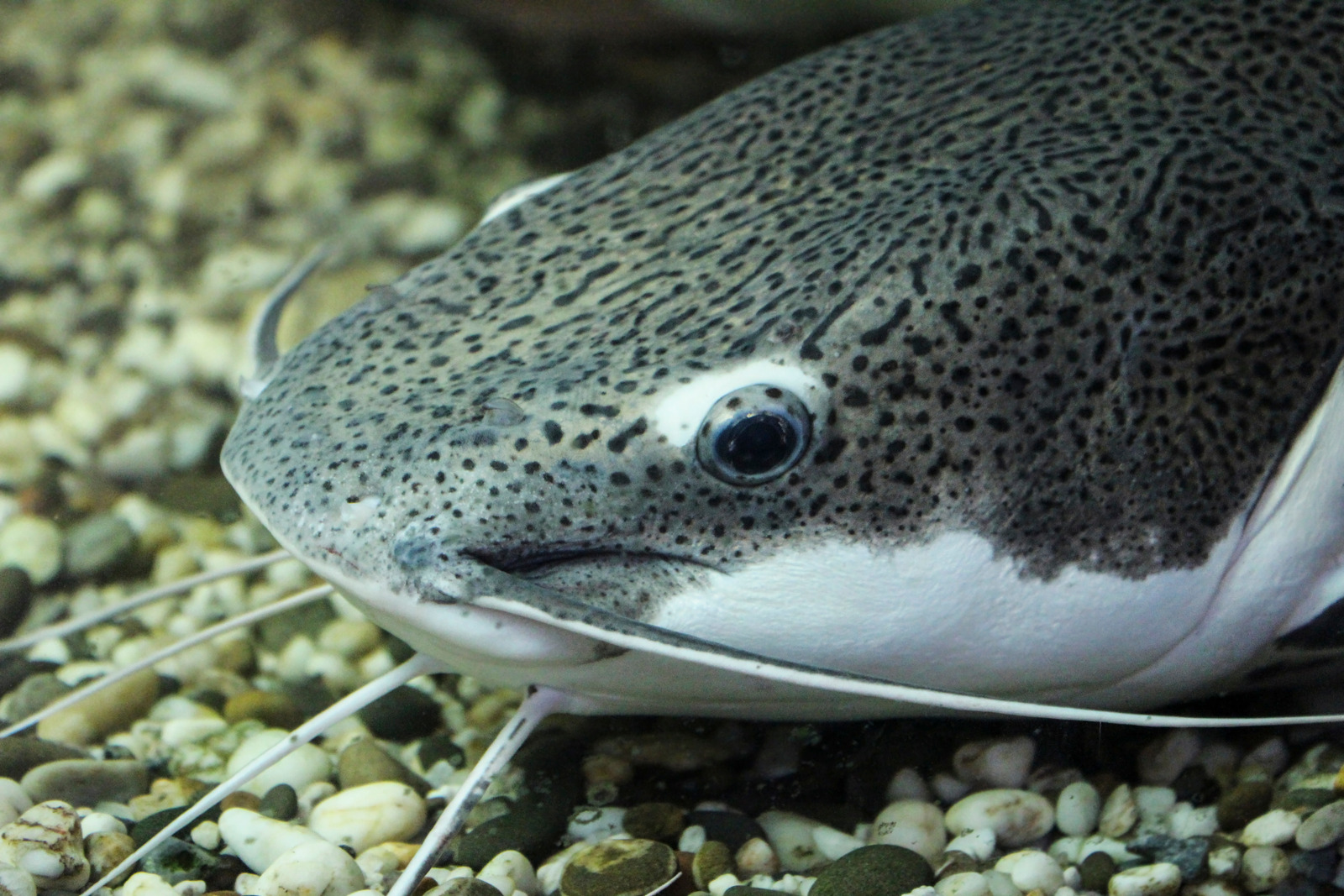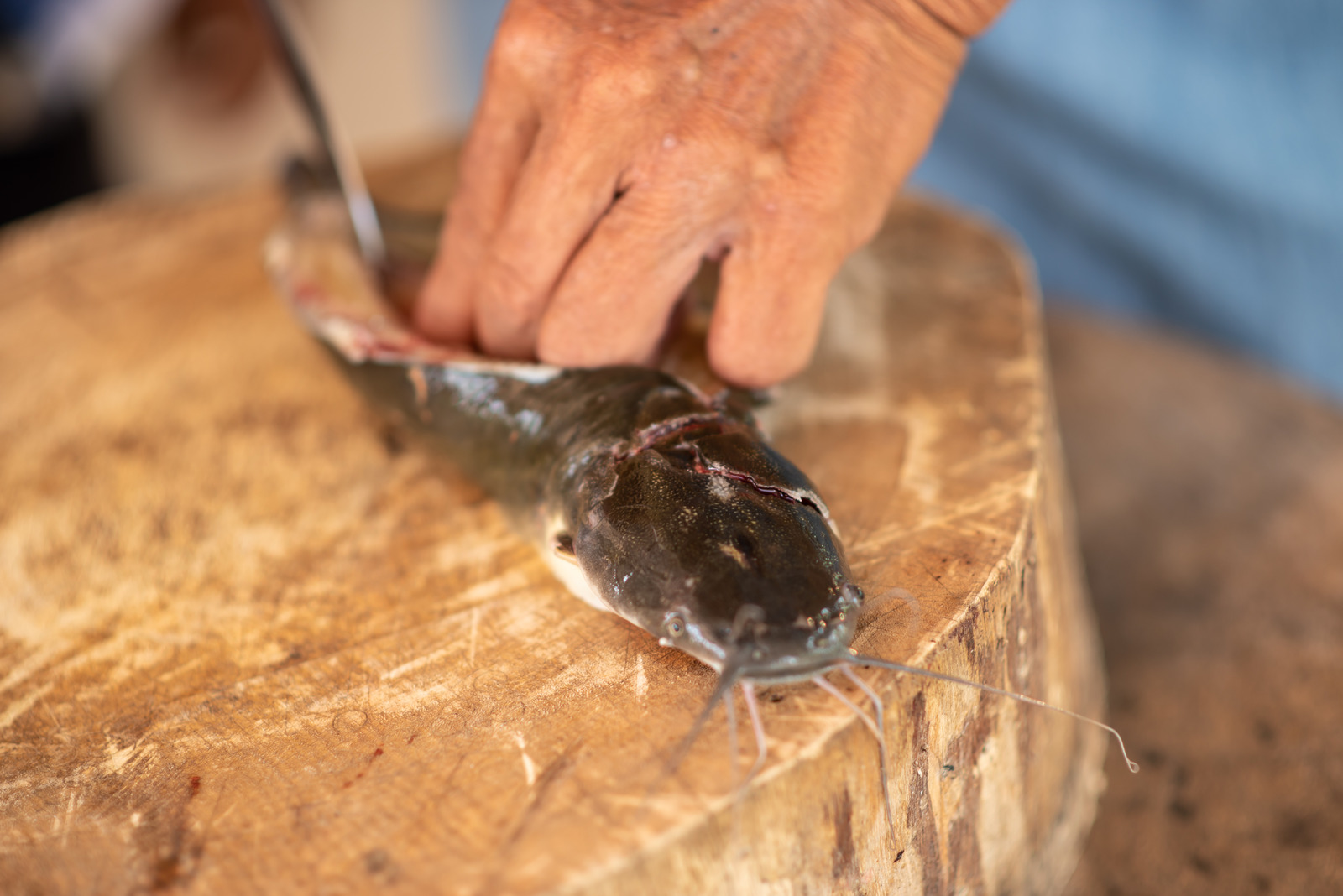Can You Eat Saltwater Catfish? Are They Poisonous?

Saltwater catfish have been receiving a lot of hate in the fishing industry over the years. Most fishermen even consider them “trash fish” and usually release them back into the water after catching them. In fact, I can give you a few reasons that can support this negative reputation.
Firstly, they have tough skin and their bodies are extremely slimy and hard to clean. They’re mostly bones as well and have too little meat. Secondly, they have spiky and dangerous spines! Saltwater catfish have poisonous spikes that can cause pain comparable to a bee sting if you’re accidentally stung. Luckily, you can easily avoid this by using a good pair of fishing pliers.
Yes, you can eat saltwater catfish! You need to be careful to avoid their pointy parts but, if carefully cleaned, saltwater catfish are completely safe and there’s no reason you shouldn’t eat them.
Cooking saltwater catfish on your next meal? Today’s your lucky day! Keep on reading this post to learn more about how to clean a catfish properly, what saltwater catfish taste like, and more. I’m confident that you’ll be a lot better at handling this ocean fish by the end of this article.
Freshwater Catfish vs Saltwater Catfish
You can easily recognize a catfish by its whiskers or barbels. These bottom-feeders also have many subspecies and you can classify them either as freshwater catfish or saltwater catfish.
As the name suggests, freshwater catfish are those you can find in rivers and lakes. They can quickly adapt to constantly changing environments and are more versatile compared to their saltwater counterparts.
Saltwater catfish, on the other hand, come from the ocean and thrive in salinated water. They have also adapted with time and can survive in different types of habitats.
In terms of taste, freshwater catfish have a mild and unbriny taste while saltwater fish have a “saltier” taste. This is because saltwater catfish tend to retain more salt. Either way, both species are worth eating and it’s all up to personal preference!
What are the Types of Saltwater Catfish?
Many species of catfish live in saltwater. Nevertheless, only two species of saltwater catfish are popular among fishermen: Gafftopsail and Hardhead catfish. Also, while the former is meatier and considered more favorable, none of them is seen as a prize catch.
Gafftopsail Catfish
Also called sail catfish and sailtop catfish, gafftopsail catfish were named after their tall, sail-like dorsal fins. However, while their fin might look majestic, avoid touching it whenever possible. Keep in mind that they have three venomous spines along their pectoral and dorsal fins.
Sail catfish are common in the Gulf of Mexico, the Caribbean Sea, and the western central Atlantic Ocean. Sail catfish have long, sharp spines that can cause painful wounds, making them one of the most aggressive fighters known to fishermen.
Apart from their dangerous spines and poisonous barbs, a thick and toxic slime also covers the body of a sail cat. The slime can get all over the place, making it such a pain if you happen to catch one accidentally.
Here are some unique characteristics that can help you identify a gafftopsail catfish:
- Tall, sail-like dorsal fin
- Silver-white belly skin
- Bluish-green and scaleless back skin
- Flattened and elongated barbels
- Forked tail fin
Hardhead Catfish
One unique feature of the hardhead catfish is the rock-line bony plate on their head. But, aside from their solid heads, you should also be careful of their serrated spines. Hardheads are what fishermen normally consider “trash fish” and not good eating fish.
Hardhead catfish are common along the southeast Atlantic Coast and the Gulf of Mexico. Also, while fishermen don’t target them, hardheads are known to be notorious for catching your bait. This means that they will end up in your hook whether you like it or not.
Here are some distinct features of a hardhead catfish:
- Elongated body
- White to yellowish belly
- Grayish-green and scaleless back body
- Moderately flatter head
- Broadly arced upper jaw
- Deep forked tail fin
Are Saltwater Catfish Poisonous?
Yes. Whether you’re fishing in the Florida Keys or other types of brackish waters, a sting from this fish species is something you shouldn’t ignore. If not treated properly, a catfish sting can lead to some serious infection.
Keep in mind that ocean catfish are more notorious than freshwater catfish. Plus, the smaller the fish, the more painful the sting gets.
With that, one of the most common myths surrounding saltwater catfish species is that the sting mostly comes from the whiskers. However, these are harmless: when it comes to saltwater catfish, what you need to worry about are the fins.
There are three fins to watch out for: the two pectoral fins on both sides of the fish’s body and the dorsal fin on top of the head. You can find a very sharp stinger that contains venomous toxins on the front of each fin. A sting happens the moment a barb enters your skin.
Stings typically take place when the fish is flopping around. This means that stings usually happen while removing the hook from its mouth or once you lay the fish on the boat. This also means that the hands are the most common place where a catfish sting occurs that’s why it is also important to wear your fishing gloves.
However, other catfish stings take place on the foot, when fishermen step on a saltwater catfish to stop it from flopping around. Some barbed spikes are so sharp that they can easily penetrate the sole of your boots! So make sure that you wear the best fishing shoes.
How to Treat a Saltwater Catfish Sting
When dealing with several species of saltwater catfish, it’s crucial to stay away from the fins as much as you can. It’s also important to always have a pair of fishing pliers to grab the fish with or cut the hook off.
But, in the event you’re already stung by a saltwater catfish, here are some things you can do:
- Leave the water immediately. Catfish stings can make you feel lightheaded and nauseous, so head to shore right away for safety.
- Don’t apply ice to the affected area, as the cold will only make the toxins more powerful and the pain much worse.
- Submerge the affected area in hot water. Make sure the water isn’t too hot, though, and that you can still tolerate it. You should start feeling the pain gradually reduce within 10-15 minutes.
- Monitor the area and consult a physician immediately if you see any redness and swelling. The doctor will check if there are no foreign objects trapped in the area and may prescribe antibiotics to ease the infection.
Does Saltwater Catfish Taste Good?
As mentioned, you can eat saltwater catfish. Just remember that saltwater catfish have a more briny taste. Meanwhile, some people suggest that they taste similar to sea trout and are fuller and saltier than sea bass and striped bass.
There are two main reasons why saltwater catfish have a strong fishy flavor. Firstly, it’s because they don’t have access to fresh food, and secondly, they mostly survive in brackish water. This results in a strong fishy and muddy flavor that most people don’t enjoy.
While gafftopsails and hardheads are both edible, some argue that only a few are tasty and the rest are not worth consuming.
However, I disagree with this. Saltwater catfish tastes good and I think it just depends on how well you cook it!
How to Catch Saltwater Catfish
Are saltwater catfish edible? Yes, but you need to remember these three things when trying to catch a saltwater catfish. These can help boost your success and make sure that you stay safe in the process.
Size
Salt water catfish tend to be smaller than freshwater catfish and rarely weigh over three pounds. They also like living in shallower waters and mostly feed during the night.
They usually cruise the skinny waters on low tides, which are unattractive to larger species, to avoid falling prey to larger fish.
They Use Their Sense of Smell to Hunt
Salt water catfish are voracious feeders and depend on their sense of smell when looking for their next meal. This is why oily and bloody baits with a strong smell like garlic, like small natural bait and mackerel, are perfect for provoking them to strike.
You may also use artificial lures that are either scented or vibrate and make noise. Some of the best artificial lures I recommend include jigs, spinners, and soft plastics.
When fishing during low tides, make sure to attach enough weight to your rig so it stays well-anchored while the tide rises. It’s also a good idea to keep the bait still for as long as possible to allow the smell to travel throughout the water and lure them in. You can use either a single or double dropper loop as your rig when fishing for saltwater catfish.
Saltwater catfish aren’t that big so you can use a light or medium tackle with any reel. Moreover, a 10-20-pound test line will do for any type of structure.
It’s best to use a medium-sized hook since it will most likely end up in the fish’s mouth instead of down its gullet. You should, however, be extra careful when unhooking the fish. Again, catfish have sharp spines and slime all over their bodies, which can cause serious infections when left untreated.
Profile
You can catch catfish while inshore fishing or offshore fishing. Saltwater catfish are also very similar to freshwater catfish. In fact, it can be difficult to tell them apart the moment you place them side by side!
But, their main difference is that a saltwater catfish has a more powerful pain associated with its fins. Saltwater catfish have super sharp spikes that even the smallest prick can cause a huge discomfort, just like a bee sting. Some people reported pain and swelling in the area after having a full-fledged stick in the hand.
How Do You Clean a Saltwater Catfish?
Can you eat saltwater catfish? You can, and this section will tell you how.
Many people dislike cleaning catfish mainly because of their tough skin and slimy bodies. Cleaning can be dangerous, too, because of the sharp barbed wires and dangerous spines on both saltwater catfish species, namely the hardhead catfish and gafftop catfish.
Cleaning a saltwater catfish and freshwater catfish is basically the same. However, you may notice that saltwater catfish are slimmer compared to their freshwater counterpart. Make sure to follow these steps before you go ahead and cook saltwater catfish.
Here are the things you need when cleaning a saltwater catfish:
- A sharp fillet knife or a fishing knife. A manual or an electric one will work just fine too.
- Kevlar glove to avoid any accidents. I find this very helpful, especially if you’re a newbie in the kitchen.
- Wooden chopping board. Never use those made of stone to avoid ruining your knife.
- A brush and antibacterial soap to make sure your work area is clean and free of germs.
Directions:
- Start by cutting around the head. Simply cut through the skin around the head. This is where you’ll remove the head later. But let’s leave it for now so you can have a better grip.
- Cut off the three fins so they won’t get in the way while handling the fish. Keep the tail on for easy handling.
- Skin the catfish from top to bottom. Smaller and younger catfish have thinner, more delicate skin, so using your hands or some tweezers may be enough. Meanwhile, bigger and older catfish have tougher skin, so you’ll need some pliers or a very sharp knife to do the job.
- Look for the line around the head you made earlier and cut through it with a big knife. If the vertebrae are too thick, slice through everything else and then bend the head back. The vertebrae will then separate and you can now cut through the connective tissues to fully remove the head.
- After removing the head, slit the belly all the way to the anal fin and remove all the suspicious bits. Never puncture the gut to avoid making an even stinkier mess. Rinse the catfish to make sure no suspicious bits are left.
- Hold the knife parallel to the dorsal (top.) Slice carefully just to open the midline. Try to get as close as possible to the backbone to get the maximum amount of white meat. Keep on slicing until you reach the vertebrae and work from the front to the tail.
- Once you’re done with the top half, lift the fish and continue slicing around the tail and then back along the stomach side. Hold it up by the tail until you detach the fillet from the vertebrae.
- Turn the fish over and repeat on the other side. Once you’ve removed as much meat as you can, you can now cook saltwater catfish however you like.
In Conclusion
I hope this article has shown you that eating saltwater catfish is possible. Preparing it can be slightly challenging, but with the right techniques, you’ll see that the effort is all worth it.
As an Amazon Associate, Fishermen's Angle earns from qualifying purchases. We get commissions for purchases made through links in this post.



